Man And Machine, Part 1
Man against Machine, Part 1
The content related to this post is a summary of the information contained in Section 4.8 of the textbook, Chemistry; The central science: A broad perspective
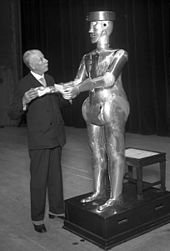
Man and Machine
It is often stated that the revolution of machines is in progress. They say machines are soon to take over the physical labour of Man and in doing so, will create a more simplistic and stress-free life. They say machines are the most hard-working entities out there, but I am sorry to disagree with this as I believe that the hardest working object in the world is something that we take for granted every single day, our bodies. I do not disagree by saying that machines do not work hard at all, as they do, but the determination and physicality cannot be matched to that of a human. Although machines and the human body may seem to be irrelevantly different, there's a single similarity between the two of them. That similarity is an initiating factor. An initiating factor, in these circumstances, is a factor that allows the body or a process to begin it’s duty, something that provides a driving force to that object. In the case of the human body and machinery, the initiating factors are that of food and fuel respectively. In this post I would be evaluating these initiating factors, and would be explaining the fundamental uses in application.
Foods
In the human body, almost all of the energy that is obtained within the body is nourished from the carbohydrates and fats that are consumed by the body. The main forms of carbohydrates that are consumed is known as starch. Starch is a nutritional component of many foods that we eat today. Upon ingestion, and undergoing several processes in the digestive system, starch is finally decompose in the intestines, to a new form known as glucose. Glucose is what is known as blood sugar, due to its unique property of being soluble in the bloodstream. Glucose is transported through the body by the use of the bloodstream and is transported mainly to cells, where glucose reacts with diatomic oxygen, in procedural steps, eventually produce a combination of carbon dioxide, water as well as a certain amount of energy. The above reaction can be summarised as follows:

The Chemical Equation for Carbohydrates
The breakdown of carbohydrates within the human body often happens at an extremely fast conversion rate, as this is required to allow the energy that is obtained from the carbohydrates to be supplied to the body. However, it is often noted that the body only stores only around, approximately, 17 kJ/g.
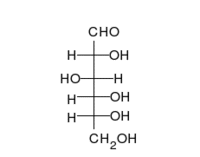
The Glucose Molecule
When we consider the other branch of nourishment to the human body, which are fats, we notice that the production of carbon dioxide as well as water occurs once more, but the productions occur under different conditions (compared to that of carbohydrates), as fats require to be metabolised as well as subjected to conditions similar to that of a bomb calorimeter. Fats are often referred as Tristearin, which has a chemical composition of C(57)H(110)O(6), and is broken down according to the following reaction:

The Chemical Equation for Fats
The chemical energy obtained from the various sources all have the same fundamental objectives within the body, which includes the repairing as well as reconstruction of damaged cells, the construction of muscles in the various areas of the body, the functioning of the endocrine system, the ability to maintain a relatively constant mean body temperature and so on. Since the body can not always use up all the energy that is formed, the body is capable of saving this energy until a further time in the future, for when the energy is necessarily needed. In order to do so, the energy is converted back into fats as it easier to form than that of carbohydrates. Fats are the extremely well adapted to facilitate the energy reserve of the body as,
- Fats are insoluble in water and due to this property, storage is favorable within the body as it will not dissolve into the bloodstream undesirably.
- Fats also produce more energy per unit grams that any other food source, such as carbohydrates and even proteins, thus it indicates that fats are the most ideal as well as efficient source of energy (based upon a basis of purely mass). The average energy produced by fats are approxiametly 38 kJ/g.
It can be noted that the metabolism of proteins within the body is known to produce less energy than that of combustion in a calorimeter due to the fact that the products are different. Proteins often contain nitrogen, which is often released as diatomic nitrogen within a bomb calorimeter. Within the body on the other hand, nitrogen is mostly converted into urea, (NH2)2CO. Proteins are a very important source of growth to the body. Proteins are responsible for providing the building materials of an extremely large range of components of the human body, such as skin, hair, organ walls, muscles, teeth and so on. At an average value, the metabolism produced of proteins produce an energy source of around 17kJ/g, which is equivalent to that of carbohydrates.
We may now understand what these energy sources are as well as how much is the average amount dissipated to our bodies, but we may not understand how to identify how much of protein or carbohydrate of fat is engine our body in the food that we eat. We must understand that it is of great importance that we monitor the amount of each of these food sources we put into our body, as too much or too little of each of these sources may have catastrophic events for our body. Monitoring of these energy sources within our food is of extreme simplicity, as the magnitude of each of these sources are available on every consumable item in the world. The fuel values for a variety of foods are shown in the following table:

Table of Food Fuel Values
It is important to note that the amount of energy that our body requires is dependent on many other factors such as the weight of an individual, the age of the individual, the muscular activity that is performed by the individual and many other factors. Roughly, an average of 100 kJ per kilogram of an individuals body weight is required per day to allow for a minimal level of body functioning. Using this as a basis, an example of a 70 kg person is expected to consume 800 kJ/h when doing light work, such as a slow walk or even gardening. When the same individual is expected to do strenuous activities, such as energy dependent tasks like running or swimming, the body often requires more than 2000 kJ/h. It cannot be over exaggerated the importance of knowing how much of energy is consumed by the body. This allows us to anticipate how much energy is needed per day and in doing so we are able to provide the necessary requirements. If the energy supply to the body is greater than that of the energy required by the body, excess energy is stored as fat.
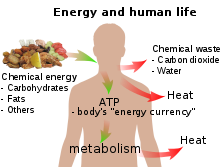
Energy Conversion Within Body
This brings us to end of my part 1 of man and machines. I hope that you know have a better understanding regarding the energy processes that occur within the human body. In my next post I will introduce the processes of machines as well as the types of reactions.
Images are linked to their sources in their description
The End
References:
[1]https://en.wikipedia.org/wiki/Energy
[2]https://www.eatright.org/food/.../food-sources-of-important-nutrients-for-vegetarians
[3]https://www.eatforhealth.gov.au/food-essentials/fat-salt-sugars-and-alcohol/fat
[4]https://www.medicalnewstoday.com/articles/161547.php
[5]https://en.wikipedia.org/wiki/Carbohydrate
[6]https://ghr.nlm.nih.gov/primer/howgeneswork/protein
[7]Chemistry,The central science: A broad perspective
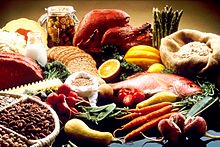
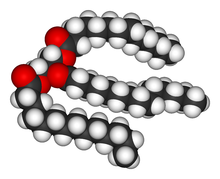
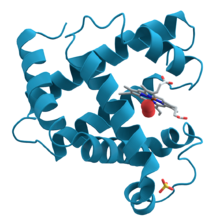
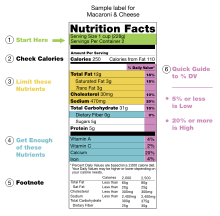
I quite agree with the introduction of this post.. Yes man could be driven away by robots who are coming to take our jobs. But there are certain things man does that cannot be compared to the robots. The zeal, determination passion, decisions will still be taken by man.
I still expect man to be the rulers and the kings of the robots.
Most definitely. Although the objective of life is too work smart rather than hard, there are certain details that a machine cannot deliver, such as man. They do not put the emotional aspect behind it.
I would also like to thank you for taking your time to read my post :)
You are welcome.
Very nice article, I am a little amazed that only one person commented on it and how I didn't get to read the article before.
I like the connection you made and the presentation was very nice and easy, while still going sufficiently in-depth, I will wait to read the other parts as well.
To bring people to your page and make it a little lively in here, you could also comment on other people's blogs. A smart educated comment and your name on their blogs is practically better than a post-promotion :D
Not only people will remember more of you but other people that are visiting other authors, such as me for example, might see your comment and your name and I might follow or comment here as well.
It's a neat trick and it also helps both you and the other authors.
Again, good article, don't be shy to drop by from time to time on my blog, I am also talking about proteins and energy sometimes :D
Cheers!
Thank you so much for your words of wisdom as well as praise, and yes i have noticed your blog also, organic based much like my field of study. Yes sir, I do try as often to interact with the community as it allows me to interact with other streams of knowledge, which is the greatest reward for me :)
Thank you again for taking the time off to read my post bud!
Congratulations @akeelsingh! You have completed some achievement on Steemit and have been rewarded with new badge(s) :
Click on any badge to view your own Board of Honor on SteemitBoard.
For more information about SteemitBoard, click here
If you no longer want to receive notifications, reply to this comment with the word
STOP